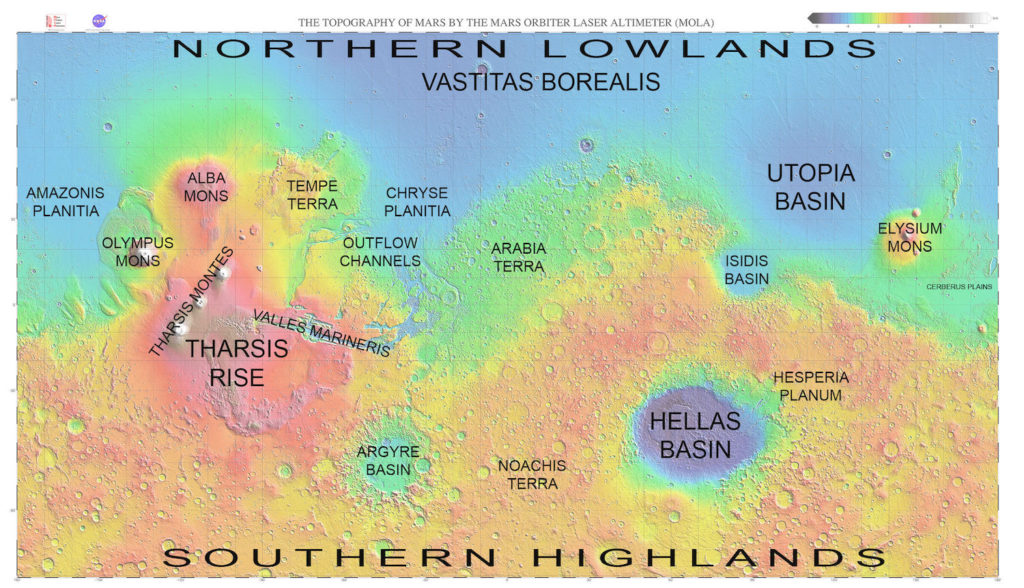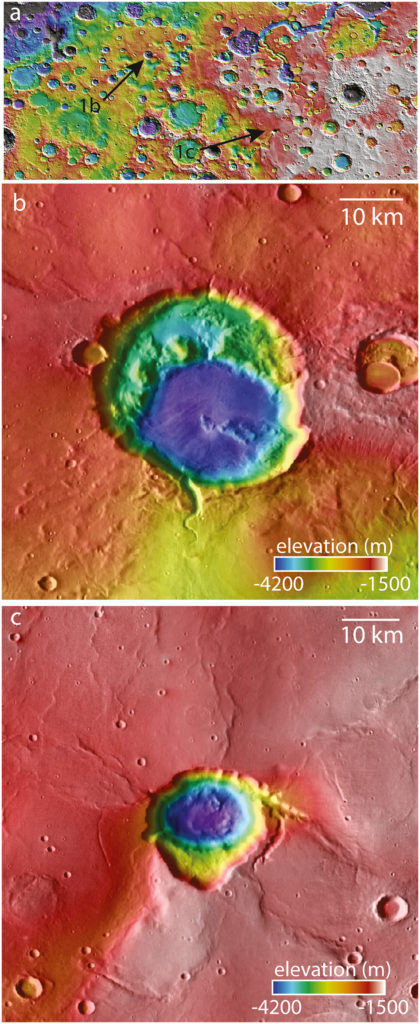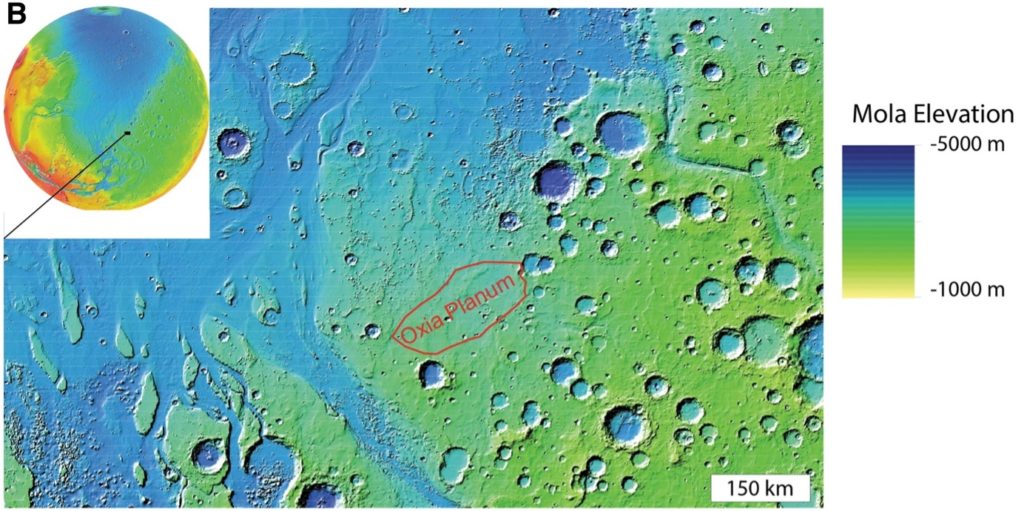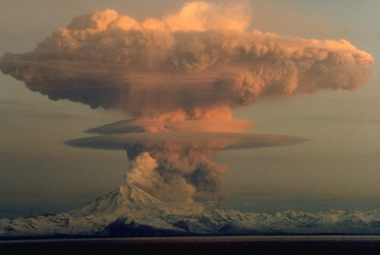Featured image: a mushroom shaped volcanic plume arising from the explosive activity of Redoubt volcano, Alaska in 1990. Credit: R. Clucas.
Paper: Caldera Collapse and Volcanic Resurfacing in Arabia Terra Provide Hints of Vast Under-Recognized Early Martian Volcanism
Authors: Yin Yau Yoyo Chu, Joseph R. Michalski, Shawn P. Wright, A. Alexander G. Webb.
Mars is a planet of extreme highs and lows containing the solar system’s largest volcano – Olympus Mons – and the largest canyon system – Valles Marineris. Tharsis and Elysium, the planet’s two largest volcanic provinces, are young surface features that were built by basaltic volcanism throughout the Amazonian, the most recent geological era on Mars.
These volcanoes can be seen so well on the surface of Mars because they are geologically young – still millions of years old! – and thus have not undergone large scale erosion. Many large, cooled lava flows can be seen within visual imagery of these areas. However, the oldest terrain on Mars is less well preserved.
To understand the ancient geology of Mars and uncover the prevailing environment billions of years ago, scientists look at the oldest rocks. These are found in the southern hemisphere. There is a large dichotomy at the Martian equator splitting the planet into northern lowlands and southern highlands.

A topographic map of Mars made from Mars Orbiter Laser Altimetry (MOLA) data. Credit: [NASA/JPL/GSFC/MOLA. Map by Emily Lakdawalla].
The southern highlands are dominated by depressions formed by impact events that have built up over the course of >4 billion years. The authors of this paper have focussed on an area near the equatorial dichotomy called Arabia Terra. Some of the depressions here are odd shapes, leading to various hypotheses of their origin. In this paper, the authors have discussed evidence of these depressions being formed by exploding ancient volcanoes. This is a tricky theory to uncover as volcanoes that explode can create depressions very similar to those formed by impact craters, especially after billions of years of erosion and resurfacing.
Impact craters form when meteorites smash into the surface causing excavation of the bedrock. They leave distinctive features including a spherical depression with raised rims and an ejecta blanket. Some larger craters also form a central peak. This study focussed on two main areas of Arabia Terra: Siloe Patera and Hiddekel Cavus. Observations of orbital data show these craters lack ejecta blankets and had unusual shapes alongside features not usually associated with impacts.
Features seen in these craters show similarity to those seen in terrestrial volcanoes such as lava flows, faults, and features related to magma chamber inflation and deflation. Ultimately, the authors note this is a contentious issue as Arabia Terra is a highly complex ancient terrain. Nevertheless, the possibility of ancient volcanism here must be discussed as it could mean there are layers of volcanic sediments within the rock record.

Elevation map of the study area. A) The two study craters – Siloe Patera and Hiddekel Cavus – within the context of the Martian dichotomy seen by the change in high elevation (red) to low elevation (purple). B) Siloe Patera. C) Hiddekel Cavus. Credit: Chu et al., (2021).
This study is also important from the perspective of what future lander missions to Mars may expect to observe at the surface. The ExoMars rover ‘Rosalind Franklin’ is landing in Oxia Planum, near Arabia Terra, in 2023.
The Mars rover missions are set towards the goal of finding signs of past, or present, life on Mars in evidence known as biosignatures. The ExoMars rover will be able to drill down to 2 metre depth and will have the most luck uncovering biosignatures in sedimentary rocks from aqueous environments as we know life thrives in water. The rover will land in the west of Arabia Terra, so our insights into ancient Mars deposits and possible volcanic ash fall here is important from the mission perspective.
Ultimately, the degraded and cratered terrain of Arabia Terra poses a major challenge in understanding the ancient Martian environment. There is a need for the exploration of this terrain to better our understanding of the red planet, especially with the incoming ExoMars rover mission to this region.

The geological context of Oxia Planum – the landing site of the ExoMars rover ‘Rosalind Franklin’ in 2023 on the western edge of Arabia Terra. Credit: Quantin-Nataf et al., (2021).
Ancient Explosive Volcanoes on Mars by Emma Harris is licensed under a Creative Commons Attribution-ShareAlike 4.0 International License.

